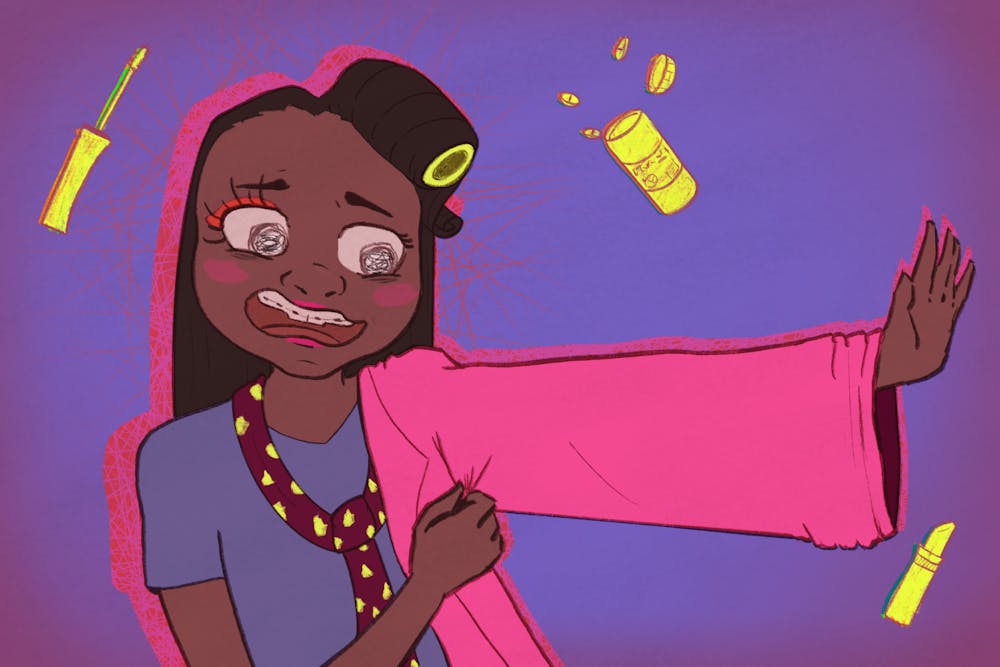Youth is hard to experience. It's not easy being 13, and nowadays, it's even more complicated as kids deal with technology on top of the everyday challenges of growing up. ASU students and educators are cautious about how youth culture has shifted and what Generation Alpha is living through now.
Looking back on Gen Z's adolescent years, notable popular tween brands like Claire's and Justice dominated the market. Now, have been struggling, as they can't connect with current children.
In 2018, Claire's filed for Chapter 11 bankruptcy, and while the company is still open today in malls across America, its pull with tween girls just isn't the same.
Similarly, Justice, another tween store whose main demographic is young girls, filed for bankruptcy in 2020 and closed more than 600 of its stores nationwide.
Justice is still trying to cling onto its once-famed popularity. In 2021, the company began distribution through Walmart, making the brand more accessible and more affordable to consumers.
As Gen Z fashion trends and fads fade from youth culture, the spotlight points to Gen Alpha, who lead a much different childhood compared to previous age groups.
The first to notice these changes are those who know kids best: Educators.
Former elementary and middle school teacher Ben Haynes, who primarily taught fifth grade for a decade, said his own childhood felt simple. He didn't really know what it was like to feel stressed. However, right now, he said it's hard to find this same carefree attitude in young teens.
"When we throw kids online at such an early age, we set them up for a slew of problems that even we, the adults, don't even know what to do with," Haynes said.
Technology offers children an outlet to learn but can also be a breeding ground for emotions they aren't mature enough to handle.
"I saw it all the time in my classroom," Haynes said. "I mean, the kids that tended to have the most struggles with mental health and the ability to regulate their emotions, understand their feelings and have meaningful, respectful and healthy connections with their classmates. It was typically those kids who just were given free rein at home to just sit and scroll."
ASU students see this shift in children reflected as well, noting how much more independence they have compared to their own Gen Z childhood.
Read More: The era of 2000s teenage rock looks to be making its comeback in 2023
Greyson Hulsing, a sophomore studying social work, said it feels like kids have more say in their lives.
"When I was a kid, if I wanted to hang out with a friend outside of school, it was very much, 'I'm gonna trust that your mom's gonna call my mom,'" Hulsing said. "Whereas nowadays it's a lot of,' Oh, I'll just text you and then you can come over whenever.'"
Gen Z social media veterans are worried about the growing online independence and the safety of young kids.
Kensey Wallace, a sophomore studying community health said for kids to live a longer childhood, technology must be monitored.
Wallace said when she was at that age, she wanted access to technology too, specifically social media, but was told no by her parents. However, now at an older age, she understands her parents' decision because it was for online safety.
"If I was 12 and I wanted to go on social media, there's a lot of crazy, deluded, creepy people online," Wallace said. "I would suggest the age to really be online is maybe like 13 to 18."
Generation Alpha is the first generation fully born in the 21st century. As Gen Z grows and passes down the torch that is youth culture to them, new pop culture, social standards and customs become the norm. Previous generations have to sit back and watch from the sidelines and observe the new model tween.
Edited by Andrew Dirst, Sophia Ramirez and Natalia Jarrett.
Reach the reporter at jagon128@asu.edu
Like The State Press on Facebook and follow @statepress on X.
Jazlyn is a sophomore studying journalism and mass communication. This is her second semester with The State Press. She has also worked at Blaze Radio.




